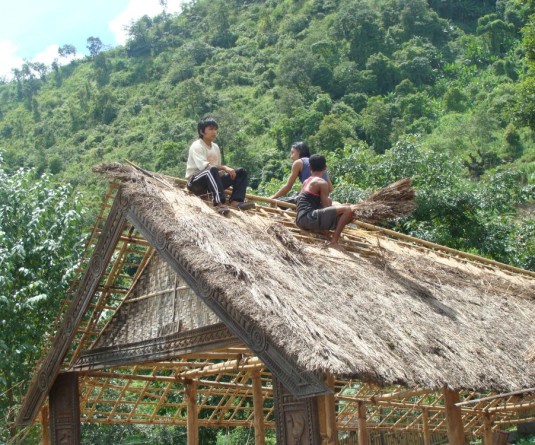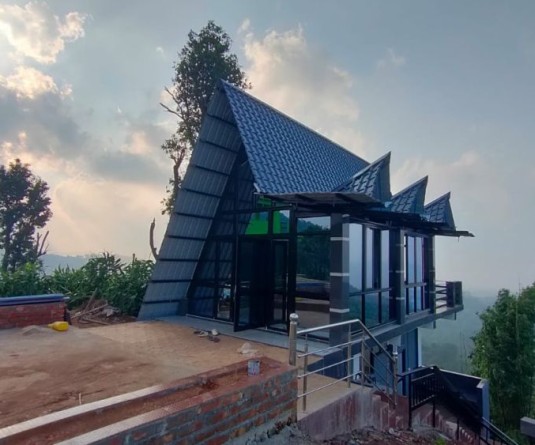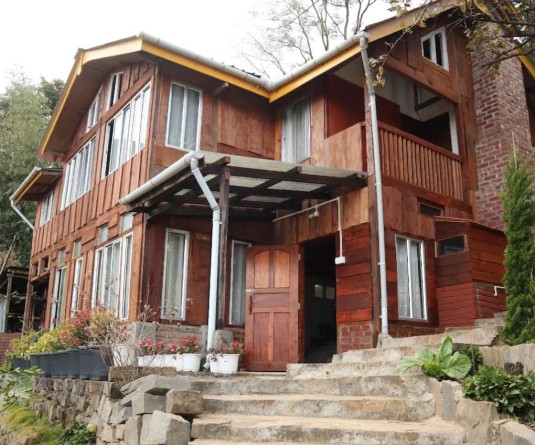Illustration by Sandemo Ngullie
The inside scoop on buying & selling of people in the NE
Morung Express News
Dimapur | May 18
A leading social activist from the North East working in the problem area of human trafficking has shed light on the practice of human trafficking in India’s north east, pointing out that this can no longer be ignored. Hasina Kharbhih, founder and team leader of Impulse NGO Network, in a recent interview given to Rachael Kilsby, currently working for Impulse NGO Network in Shillong, expressed concern that “the buying and selling of people generates a highly lucrative and seriously life-destroying trade” and that “thousands of men, women and children become entangled each year in this poorly understood and only recently acknowledged phenomenon”. Hasina who has done pioneering work in the area of human trafficking disclosed that during research into the problem, they had detected “unexplainably large numbers of missing women and children in Indian villages bordering Nepal and Bangladesh”. “The link to human trafficking slowly became evident, and more thoroughly explored, thanks to accounts from rescued survivors and interviews with family members”, Hasina states in her interview.
On the reason the North East remains a hot-spot for human trafficking, Hasina points out that the region shared many international borders, most of which are open and unmanned and these points provided an easy passage in and out of India for organized human trafficking syndicates to operate undetected. She also informed that Nepalese girls have long been in demand, owing to their fair complexion and oriental features. However, greater awareness and networking among Nepalese communities has forced traffickers to turn to alternative sources. Hasina disclosed that the solution has been to target north-eastern girls as there are close physical similarities and the greater socio-political climates are conducive.
Hasina also pointed out that the situation for each of the eight north-eastern states varies. For example, she states that Meghalaya is a major destination due to its coal industry. Estimates suggest that 40,000 children from Nepal and Bangladesh have been trafficked into the coal mines by landowners and exporters for the purpose of slave labor. Furthermore, the highway networks in the north east connect many national and international destinations. In the state of Assam, truckers have used the highway routes to transport drugs and traffic girls. “We have seen truck drivers from all over India deceiving young north eastern children into fake marriages, child labor and sex work”, Hasina says. Another contributing factor is the female sex ratio-decline in northern India.
Resulting from the cultural male child preference, this imbalance has sadly led to many girls being trafficked for marriage.
On the main source, transit and destination points for these victims, Hasina states that from her experience the destinations are usually New Delhi, Mumbai, Pune, Goa, Kolkata and extend as far as Thailand, Singapore and Malaysia. “There are likely to be many more locations throughout India and across the globe, we just haven’t learned of them yet”, she maintains. According to her, Siliguri is the main transit point as it connects many train lines and bus services. It has long been a convenient way to smuggle women and children across the Indo-Nepali border without detection, Hasina discloses in her interview.
While it was generally accepted that people below the poverty line with limited employment opportunities are the most vulnerable to being targeted by human traffickers, Hasina gave an interesting insight into the recent trend whereby young, educated girls seeking employment outside their local area have also been caught up in trafficking. These girls are generally duped / coerced into the commercial sex trade by ill-intentioned employers, she points out. Women and children are also commonly deceived by offers of fake marriages. There have been cases where non-Indian residents (NRIs) have married women as a cheaper alternative to paying domestic staff. Highly educated girls have been exploited and abused in these marriages.
The armed conflict in the north east has only added to the problem, according to Hasina and points out that trafficking has become more rampant in this type of environment as people are more vulnerable. “Women and children are being forced to act as carriers of drugs and arms. This puts them at extreme risk of violence and exploitation”, she states. Hasina also informed that not all trafficked victims were used in the flesh trade and that those equal numbers was also found for the purpose of labour. Other purposes have included organ transplants, camel jockeys in Saudi Arabia and beer bar dancers.
It was also disclosed that the usual price offered for a victim varies depending on the age, the brothel buying the children / women, where the destination point is, the purpose intended for the victim, how young / pretty she is and her education level (a higher price can be asked for girls who speak a little English as they can be offered to wealthier customers). Generally speaking the price ranges from Rs. 15,000 – 30,000 in the flesh market (USD $300 – $600), whereas, child labors tend to be sold to middleman for Rs 5,000 - Rs 7,000 (USD $100 - $140), Hasina adds.
While acknowledging that HIV / AIDS and human trafficking are closely interlinked, Hasina points out that many of the victims are exposed to a far higher risk of contracting HIV / AIDS and other STIs. This risk is further exacerbated by the myth that sex with a child can magically cure AIDS. She also says that human trafficking is the symptom of a social problem; traffickers are merely instruments catering to already existing demands - free labor, sexual exploitation of others, etc. “Society needs to challenge these behaviors as they harm us all and hinder social progress”, Hasina says.






